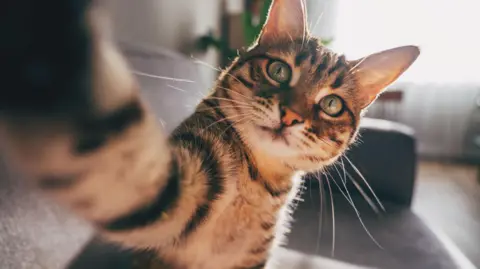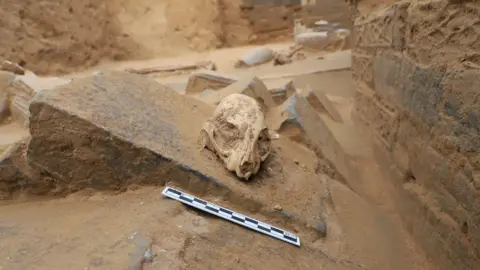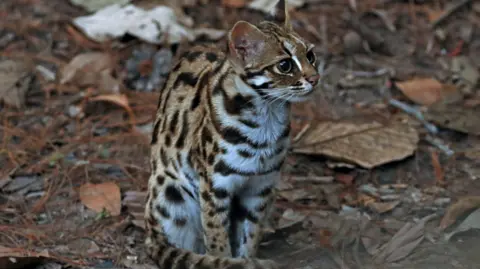Helen BriggsEnvironment correspondent
 Getty Images
Getty ImagesIn true feline style, cats took their time in deciding when and where to forge bonds with humans.
According to new scientific evidence, the shift from wild hunter to pampered pet happened much more recently than previously thought – and in a different place.
A study of bones found at archaeological sites suggests cats began their close relationship with humans only a few thousand years ago, and in northern Africa not the Levant.
“They are ubiquitous, we make TV programmes about them, and they dominate the internet,” said Prof Greger Larson of the University of Oxford.
“That relationship we have with cats now only gets started about 3.5 or 4,000 years ago, rather than 10,000 years ago.”
 Getty Images
Getty ImagesAll modern cats are descended from the same species – the African wildcat.
How, where and when they lost their wildness and developed close bonds with humans has long puzzled scientists.
To solve the mystery, researchers analysed DNA from cat bones found at archaeological sites across Europe, North Africa and Anatolia. They dated the bones, analysed the DNA and compared this with the gene pool of modern cats.
The new evidence shows cat domestication didn’t start at the dawn of agriculture – in the Levant. Instead, it happened a few millennia later, somewhere in northern Africa.
“Instead of happening in that area where people are first settling down with agriculture, it looks like it is much more of an Egyptian phenomenon,” said Prof Larson.
 Ziyi Li and Wenquan Fan
Ziyi Li and Wenquan FanThis fits with our knowledge of the land of the pharaohs as a society that revered cats, immortalising them in art and preserving them as mummies.
Once cats became associated with people, they were moved around the world, prized as ship cats and pest controllers. Cats only reached Europe around 2,000 years ago, much later than previously thought.
They travelled around Europe and into the UK with the Romans and then started moving east along the Silk Road into China.
Today, they are found in all parts of the world, except Antarctica.
 Getty
GettyAnd in a new twist, the scientists discovered that a wild cat hung out for a while with people in China long before domestic cats came on the scene.
These rival kitties were leopard cats, small wild cats with leopard-like spots, that lived in human settlements in China for around 3,500 years.
The early human-leopard cat relationship was essentially “commensal” where two species live alongside each other harmlessly, said Prof Shu-Jin Luo of Peking University in Beijing.
“Leopard cats benefited from living near people, while humans were largely unaffected or even welcomed them as natural rodent controllers,” she said.
 Getty
GettyLeopard cats did not become domesticated and continue to live wild across Asia.
Curiously, leopard cats have recently been crossed with domestic cats to produce Bengal cats, which were recognised as a new breed in the 1980s.
The research is published in the journal, Science and in Cell Genomics.




